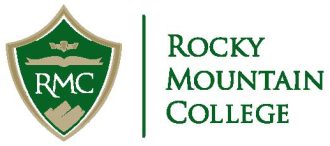Research Opportunities
May 9, 2023 2024-01-19 20:12Research Opportunities
Environmental Science faculty are engaged in active research projects in the Greater Yellowstone Ecosystem, and students in the program are involved in research both inside the classroom and as independent student researchers. Classroom efforts include ongoing monitoring projects in different habitats, from the high alpine plateaus of the Beartooth Mountains to the Yellowstone River. Some of these sites are natural areas that are quickly becoming urbanized and degraded through the invasion of non-native plant and animal species. Long-term studies will help identify ways to reduce the negative impacts of climate change and development and help managers mitigate damage, and eventually lead to rehabilitation of some of these sites.
A unique element of our program is the fact that we do not have graduate students. This means that highly motivated students have the opportunity to carry out hypothesis driven research as an undergraduate student. These students work closely with faculty to develop a specific research proposal. Research students enroll in ESC 496 Research Analysis, which helps them work through the data entry, statistics and dissemination aspects of their project. Students in this program regularly present at the Murdock Conference, Montana Wildlife Society Conference, MT Space Grant Consortium, as well as the RMC annual symposium.
Ongoing Faculty Research
Kayhan Ostovar’s Lab
We have developed a long-term study on spiny softshell and snapping turtles. Turtles are a neglected faunal component of freshwater ecosystems and can serve as suitable ecological indicators of anthropogenic changes. Across seasons and life stages, these two species integrate the aquatic environment in different ways through their choice of hibernation and nesting sites. Around the world freshwater turtles face increasing pressure due to habitat modification of rivers and streams, pollution, and high rates of commercial harvest. We are studying distribution, abundance, population structure, subpopulation connectivity and heavy metal contaminant loads for both species.
RMC Green & Gold Magazine Article
Billings Gazette Article
Humans have heavily modified aquatic systems all across the country with dams and irrigation diversion systems. We use the Yellowstone River (an undammed system) as a model of how a naturally functioning system operates. By studying populations of turtles here, where we still have many of the natural conditions of a free-flowing river, we can better understand the potential impacts of anthropogenic activities and provide solutions and alternatives for management and restoration efforts.
Another interest of mine is biodiversity monitoring and biological surveys. My goal with teaching students is to awaken an awareness of the importance of biodiversity and our impact on the environment. Many class projects are tied to ongoing biological monitoring and field based exercises, providing students with hands on skills and place-based learning.
Over the years students have worked with me to organize a number of different Bioblitz projects.
First Bioblitz in MT (Yellowstone River)
Billings Gazette Article
Yellowstone National Park BioBlitz
Billings Gazette Article
NBC News Article
American Prairie Reserve BioBlitz
Final Report
Pryor Mountain BioBlitz
Billings Gazette Article
The emphasis of my teaching is to provide field experience and hands-on opportunities for students with an additional recognition of the importance of a stewardship ethic. Research students and freshmen in our introductory Environmental Science course all participate in the annual river cleanup float. To date this project has resulted in the removal of over 105,000 lbs of trash from the Yellowstone River and almost 500 tires.
Yellowstone River Research Center
Contact
Rocky Mountain College 1511 Poly Drive Billings, MT 59102


